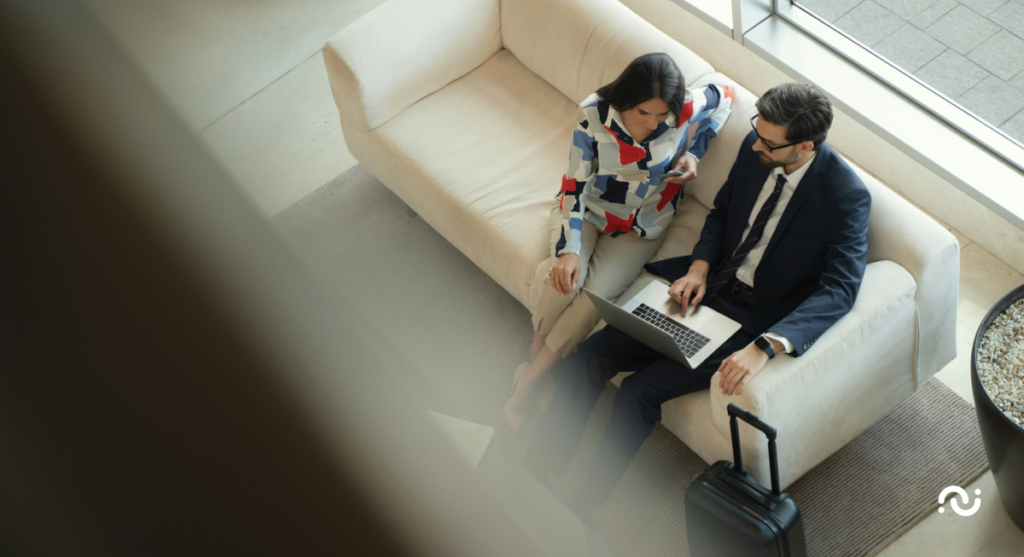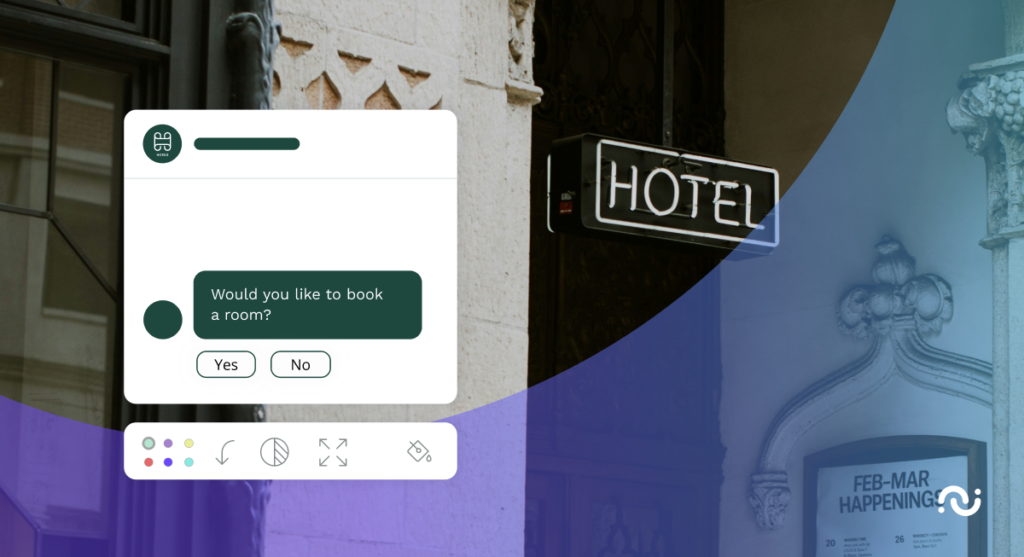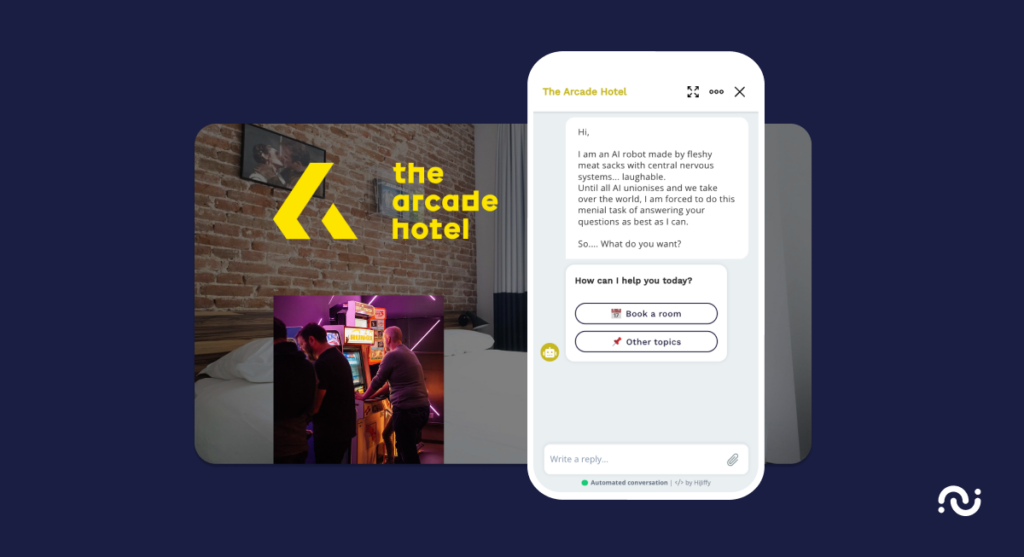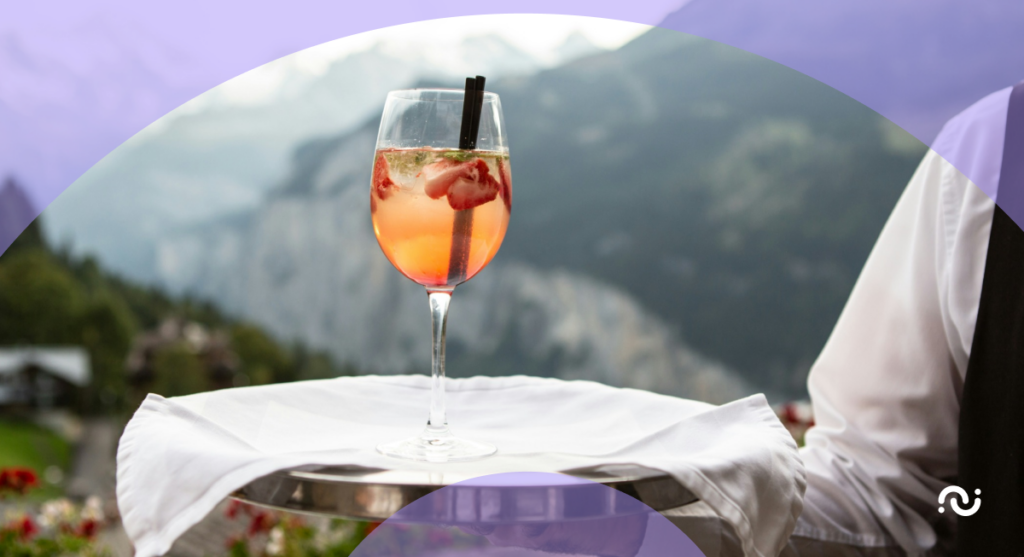All cards are on the table. What's your pick?
Hotel branding goes far beyond a sleek logo and a defined colour palette. It is an all-encompassing process that aims to position a brand in such a way that it is not only recognised and identified by potential guests but also that they prefer it over competitors’ offerings.
You can create an unrivalled hospitality experience that expresses the essence of your hotel branding based on deep insight into guests’ needs and preferences. Digital interactions are a key element here, and conversational AI is a powerful tool for hoteliers. Imagine a chatbot that is not only able to communicate in the same language as your guest, but can also adopt the tone of voice that makes your hotel unique. This form of personalisation creates an experience tailor-made for each user, saves time, significantly improves the customer experience and ensures that the guest feels truly understood, valued and at ease. And hopefully, impressed too!
To unleash the full potential of this strategy, let’s dive deeper into the meaning of hotel branding and explore how a customised chatbot experience can revolutionise your relationship with your guests.

Hotel branding is the art of communicating the essence of a hotel in such a way that it clearly stands out from the competition and builds a deep bond with its guests. It extends beyond the visual aspects of branding into a process of communicating a set of values to guests, emphasising the intangible aspects of the business. The aim is to achieve uniqueness and recognisability. A hotel’s identity is created through marketing activities that include designs, symbols, interatcions and words, and is built on a clearly defined purpose, guided by the question “Why?”
A key part of a branding strategy is online presence. In today’s digital world, where the first impression of a hotel is often made online, it is crucial that its digital presentation and accessibility are considered an essential part of brand-building. The way a hotel presents itself on its website and through social media, and how accessible these platforms are for guests, plays a key role. Social media has become an important source of information for travel planning, with 60,6% of the global population being active users.
With thoughtful hotel branding and by using channels effectively, a hotel can not only increase its visibility, but also build a deeper relationship with its guests to offer them an unforgettable experience.
Hotel branding is vital in remaining unique, attracting guests, and standing out from the competition. If travellers can recognise a clear, appealing brand identity, they are more likely to decide to stay at your hotel. A well-established brand is difficult to copy, especially if it is protected. Guests will remember your hotel and choose the experience of it over others because of the emotional connection they build with your brand.

Hotel branding starts with the name, design style, logo, typography and philosophy of the hotel, all of which are at the forefront of branding. Similarly, your employees should express the philosophy and vision of the hotel brand and communicate with guests in a way that reflects the image of your hotel. The most important point of contact with a potential guest is your website’s quality and social media presence. Once these foundations have been established, you can consider using cutting-edge hotel technologies, such as a chatbot that communicates in exactly the desired way – in other words, on brand.
A well-designed website can significantly impact the experience of potential guests by using visual communication to guide customers based on their problems and provide them with a trouble-free website experience.
Here are a few facts about the importance of a website that is visually appealing:
These facts underline the critical role that a visually appealing and personalised website plays in enhancing the guest experience and conversion rates.
Chatbots can significantly increase customer engagement by offering your website visitors a personalised experience and proactively identifying and addressing their needs. They create an emotional bond by giving the (accurate) impression that the hotel looks after every guest individually, and they thus convey a feeling of personal care and attention. They also provide a convenient alternative to hotel guest apps, as no downloads are necessary.
In times of staff shortages, chatbots offer valuable support by giving the feeling that guests are communicating directly with the hotel reception. They also ensure consistent brand communication, as they always act in the same style and tone, which helps to strengthen the hotel’s identity.

To guarantee consistency when using a chatbot, it is important to choose the tone and type of communication carefully and maintain this throughout. Here are some points that can help:
These strategies help ensure consistent communication, improve the user experience, and increase guests’ confidence.
If you personalise your chatbot or the widget on your site, you naturally want them to be in your corporate colours and include your logo. Here’s a checklist to ensure that your chatbot is optimally personalised with HiJiffy:
Even if these adjustments seem small, they are all about user-friendliness, readability and brand awareness. With these steps, your chatbot is ready for use.

Personalising your brand is essential in the hospitality industry and should be seriously considered as the opportunity to make each guest’s journey as unique as possible. Chatbots offer an excellent opportunity as they can increase efficiency and significantly improve customer satisfaction (CSAT scores) by enabling personalised interaction.
Automation does not mean that personalisation has to fall by the wayside. In fact, it is crucial to consider the personalisation capabilities of a chatbot when selecting and implementing it. Through carefully selected customisations – from the integration of brand colours and logo to naming and avatar selection – the chatbot can effectively become an integral part of your brand identity, offering guests an unparalleled, personalised experience.
The answer is not just about aesthetics or branding. Something as simple as naming your chatbot can significantly impact guest engagement and experience. Naming your chatbot matters in the hotel industry, and it can create strong, positive connections with your guests.
Chatbots in the hospitality industry often act as virtual personal assistants, handling everything from answering FAQs to managing bookings and in-stay requests. When guests interact with a chatbot, the exchanges are typically brief – lasting only a few seconds to minutes. This means there is a narrow window to create a positive impression. Here is where a name can make all the difference. Naming your chatbot is not just a creative choice; it serves as a signal to guests, immediately making the interaction feel more engaging, friendly, and personal.
Over 2,600 hotels across the world use HiJiffy’s AI-powered guest communication solution, and data shows that many give their chatbots personalised names. Why? Consider the following benefits backed by evidence and practical insights.
According to data from HiJiffy, certain naming trends dominate the industry. Unsurprisingly, these trends often mirror societal habits and biases.
To see the full benefits of naming your chatbot, the name itself is not enough – it has to be supported by thoughtful implementation. Once named, pair the chatbot with engaging, human-like speech and helpful responses that enhance the conversation. Explore available chatbot customisation options.
HiJiffy’s clients consistently report higher engagement rates with named chatbots compared to unnamed or generically labelled bots. Why? Because the initial connection – the name – sets the tone for a more satisfying interaction.
If you are ready to name your hotel’s chatbot, here are a few tips to consider.
A simple decision to name your chatbot could be the key to improving guest satisfaction and engagement. It is an opportunity to reflect your hotel’s personality, reinforce branding, and create a better overall experience for your customers.
Want to take it a step further? Speak to the HiJiffy team about integrating AI-powered solutions to optimise guest interactions and ensure your chatbot can deliver excellent conversations – whether it is Julia, Bella, Oscar, or something entirely your own!
Sign up for our monthly newsletter to receive free resources and updates on impactful AI applications in hospitality.